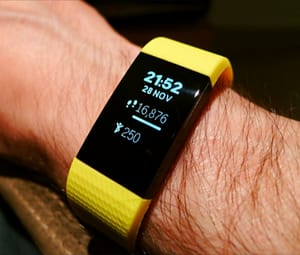Biohacking for Beginners
When thinking about bio hacking, there are a few things that you need to know before starting. First of all, let’s take a look at what biohacking actually is.
What is Biohacking?
Biohacking is the use of techniques to improve biological function, physical and/or mental health, memory and performance in order to increase your life span, slow down aging, and speed up the body’s ability to recover from illness and disease. You can use biohacking for health purposes or for personal goals such as becoming more productive. This can be done through a number of ways, including by physical, chemical and electrical means.
In the simplest terms, biohacking is the process of using tools and technology to hack our biology in order to improve our health and performance. This can be as simple as wearing a fitness tracker to monitor our activity levels, or as invasive as implantable devices that allow us to track our health data in real time.
Is Biohacking Necessary?
So why do we need biohacking? In a world where we are constantly bombarded with environmental toxins, stressors, and processed foods, our bodies are under constant assault. By hacking our biology, we can take back control of our health and optimize our well-being. In addition, biohacking can help us identify and correct imbalances before they lead to chronic disease. When used correctly, biohacking can be a powerful tool for achieving optimal health and vitality.
The benefits of biohacking
Biohacking can offer many potential benefits, including improved mental clarity, increased energy levels, better sleep, and enhanced physical performance. In addition, biohacking can help to reduce stress levels, improve mood, and promote overall well-being.
It can involve anything from using devices to track fitness goals to using genetic testing to customize a nutrition plan.
Apps as Biohacking Tools
 Apps are a great biohacking tool. These can be used to track fitness (steps/activity), diet, sleep and health. These apps are probably the best place for a beginner to biohacking to start. Strava is a popular app for logging activity. There is also a social element to it where other people comment on your run, walk or cycle ride. This is a way to get accountability and a boost to keep you encouraged.
Apps are a great biohacking tool. These can be used to track fitness (steps/activity), diet, sleep and health. These apps are probably the best place for a beginner to biohacking to start. Strava is a popular app for logging activity. There is also a social element to it where other people comment on your run, walk or cycle ride. This is a way to get accountability and a boost to keep you encouraged.
There are loads of apps for dieting, but for a beginner, the free option of the MyFitnessPal app is a great start. You log your food, and the app counts the calories and breaks down the nutrition. You can log activity on this app as well, although the Strava app can be linked to MyFitnessPal, increasing the biohacking benefits. Both apps can also be linked to trackers worn on the wrist.
They are another great bio hack for beginners. They track your steps and sleep. They even nag you when you don’t move enough by vibrating! This gives you a reminder to get up and move more, which is great when you are thinking about fitness.
While some people may view biohacking as a fringe pursuit, there is a growing body of evidence that suggests it can have real benefits.
For example, one study found that people who used biohacking devices (such as apps tracking steps), were more likely to meet their fitness goals than those who did not (1).
Nutrigenomics
Another form of biohacking is nutrigenomics. The interaction between genetics and diet can be a complicated process. However, it can be the link that helps people lose weight. People who follow a personalized nutrition plan based on genetic testing, can lose more weight than those who do not. For instance, there is research proving that people who have the risk version of the FTO gene (known as the obesity gene) benefit from high protein diets. This was proved during a 9 month study of 195 people. Those on the high protein diet lost weight faster than those not on the adapted diet (2).
We have a series of articles on anti-aging on our website. Not surprisingly, there is an article on Foods to Help the Anti Aging Process. Give it a read; the goal of proper diet with nutrigenomics is the same as any diet, just a little more sophisticated.
Improved Mental Health

What are the risks of biohacking?
Having discussed the benefits, in the interest of balance, it is only right that we touch on the risks associated with bio hacking. The degree to which you bio hack your life is dependent on the risk. For instance, one of the most popular biohacking practices is breath work.
Breath Work

Penetrating Your Skin
When tinkering with devices that pierce the skin, there is always the potential for bacteria to enter the body and cause an infection. The body may also react to the device, causing inflammation and the risk of tissue damage. After all, you are putting a foreign body into the skin (10).
When embedding the device in the body, it should be done by a professional so that it is inserted properly. Otherwise, it could cause serious damage to the surrounding tissue. There is also a risk of electrical shock. If a biohacker is not careful when dealing with electronic devices, they could suffer a serious shock. While these risks are relatively small, the biohacking community is still working to mitigate them (10).
In addition to the health risks, it is worth considering the issue of privacy. Once something is embedded in your body, it cannot be removed or turned off (10).
How to get started with biohacking
If you’re interested in starting your own biohacking journey, there are a few things you should keep in mind. First, it’s important to understand that biohacking is not a one-size-fits-all approach. What works for one person may not work for another. It’s important to find an approach that fits your specific goals and needs.
Consult a HealthCare Professional
It is also important to consult with a healthcare professional before starting any new health regimen, including biohacking. This is especially true if you have any underlying health conditions.
As well as getting advice from your doctor, it is important to educate yourself. There are a lot of myths and misconceptions out there, so it’s important to do your research. Once you have a good understanding of what biohacking is and how it can benefit you, you can start exploring some of the different techniques that are available. For example, you might want to try out a new diet or supplement regime, or experiment with sleep hacking or cold therapy. The important thing is to find what works for you and your lifestyle.
Myths and misconceptions about biohacking.
Biohacking is only for wealthy people:

There are plenty of simple and affordable ways to start biohacking. For example, you can hack your diet by eating more nutrient-rich foods, drinking more water and cutting out processed foods. Or you can hack your sleep by implementing better sleep hygiene habits. None of these things require much money.
Biohacking is only for people with medical conditions:
Another common myth about biohacking is that it’s only for people with medical conditions. This couldn’t be further from the truth. While biohacking can certainly help people with medical conditions, it’s not only for them. Anyone can benefit from biohacking. Whether you’re looking to improve your cognitive function, energy levels, or physical performance, there’s a bio hack for you.
Biohacking is dangerous:

Biohacking is only for scientists:
This is another myth that’s simply not true. Everyone can benefit from biohacking, regardless of their scientific background; despite its somewhat scientific sounding name. While you don’t need to be a scientist to start biohacking, it helps to have some basic knowledge of biology and physiology. However, there are plenty of resources available to help you get started, even if you’re not a scientist.
Biohacking is illegal or unethical:
This is another myth that is not true. The majority of bio hacks are perfectly legal and ethical. However, as with anything, there are some people who take things to extremes, especially when it comes to gene editing. This type of bio hacking is governed by ethical rules and regulations, primarily to ensure safety. For the most part, there are no legal or ethical repercussions. If in doubt, do your due diligence.
Biohacking is a fast-growing phenomenon that has the potential to completely change how humans live their lives. You don’t need to be wealthy, have medical conditions, or even know much about science to benefit from this new technology. What are you waiting for? Start biohacking your health today!
References
- Behavior Change with Fitness Technology in Sedentary Adults: A Review of the Evidence for Increasing Physical Activity https://www.ncbi.nlm.nih.gov/pmc/articles/PMC5225122/
- Effects of a High-Protein/Low-Carbohydrate Diet versus a Standard Hypocaloric Diet on Weight and Cardiovascular Risk Factors: Role of a Genetic Variation in the rs9939609 FTO Gene Variant https://www.karger.com/Article/Abstract/441142
- Do Wellness Tourists Get Well? An Observational Study of Multiple Dimensions of Health and Well-Being After a Week-Long Retreat https://www.ncbi.nlm.nih.gov/pmc/articles/PMC5312624/
- https://www.gwinganna.com/packages/
- How Breath-Control Can Change Your Life: A Systematic Review on Psycho-Physiological Correlates of Slow Breathing https://www.ncbi.nlm.nih.gov/pmc/articles/PMC6137615/
- Effectiveness of Deep Breathing and Body Scan Meditation Combined with Music to Improve Sleep Quality and Quality of Life in Older Adults https://openpublichealthjournal.com/VOLUME/13/PAGE/232/FULLTEXT/
- Breathwork https://www.goodtherapy.org/learn-about-therapy/types/breathwork
- Hyperventilation https://www.peacehealth.org/medical-topics/id/hypvn
- Breathwork in body psychotherapy: Clinical applications https://www.nativeyogacenter.com/pdf/doc-daniela-breathwork-in-body-psychotherapy-clinical-applications-1619530149.pdf
- Biohacking: An exploratory study to understand the factors influencing the adoption of embedded technologies within the human body https://www.ncbi.nlm.nih.gov/pmc/articles/PMC7226663/
- Biohacking: The Ethical Implications of Democratizing Biotechnology https://vce.usc.edu/semester/fall-2021/biohacking-the-ethical-implications-of-democratizing-biotechnology/

